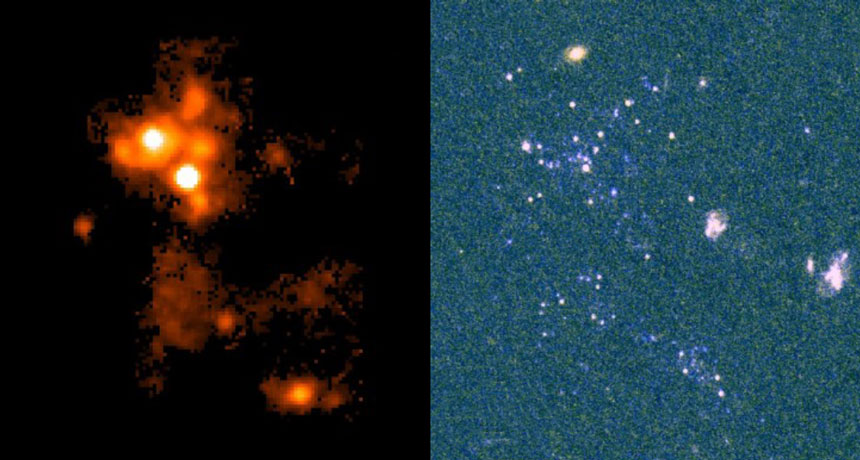Loner gas clouds could be a new kind of stellar system
The clumps of gas and stars may have meandered for 1 billion years

LONE RANGER Hubble images of SECCO 1 show a smattering of stars, but the much more abundant clumps of hydrogen gas are scarcely visible (right). When viewed based on data from the MUSE spectrograph in Chile, the gas is visible (left).
G. Beccari et al/Monthly Notices of the Royal Astronomical Society 2017